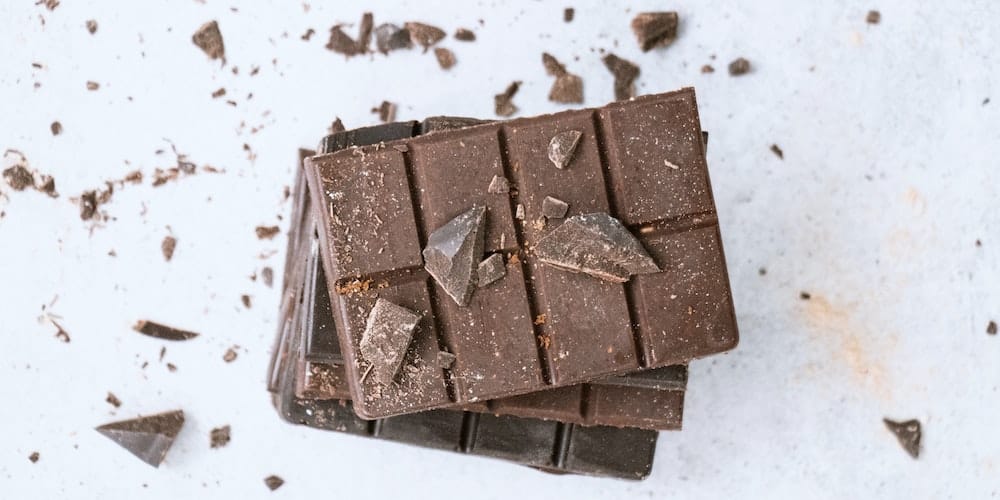What is raw chocolate?
Origin and emergence of the concept
Currently, the cultivation and global market of cocoa is shared between West Africa, Asia, and South America. The majority of the beans are then roasted and processed into chocolate.
But in recent years, cocoa beans are being showcased in a completely different way… Unroasted, or at very low temperatures, simply fermented and then dried, they result in exceptional raw chocolate with a more natural and vegetal taste.
Also read The cultivation and global market of cocoa
The production of raw chocolate is part of the “raw food” concept, advocating the consumption of raw or low-temperature prepared foods to preserve all nutrients.
Created in the United States in the 1980s, it gradually became popular in England, Germany, and then the rest of Europe, including France. This new way of eating has allowed the rediscovery of certain foods, this time in their raw form, like chocolate.
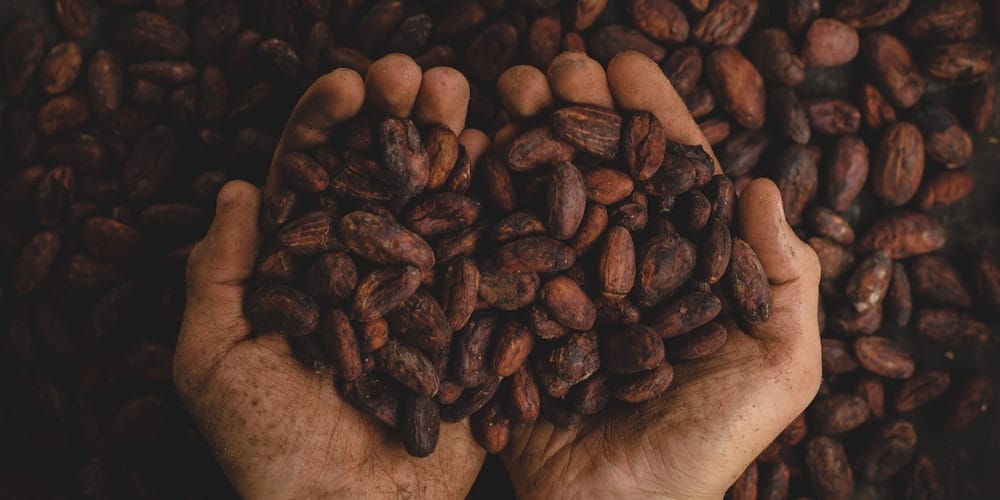
Today, raw chocolate is very appreciated by both chocolatiers and consumers. It has a surprising taste, quite different from classic chocolate, and subtle and varied aromas depending on the varieties of cocoa chosen.
The manufacturing steps
Before obtaining raw chocolate in its final form, several manufacturing steps are necessary. However, they are fewer than for the production of traditional chocolate.
The cocoa beans (Theobroma cacao), enclosed in the cacao pods, are first extracted during pod breaking.
They then undergo a phase of fermentation which stops germination, removes the mucilage, develops enzymes, and reveals the beans’ aromas.
To carry out the fermentation, the cocoa beans are wrapped in banana leaves and placed in wooden boxes. The process lasts about 1 week.
Also read The day we harvested cocoa in the Amazon
Next comes the sun drying stage, crucial for the proper preservation of the beans. They are placed on dryers for several days, until reaching an optimal humidity level (about 7%). And there you go, the raw cacao beans are ready!

From cocoa beans to raw chocolate
Cocoa beans can be eaten as is and directly consumed once dried. But, of course, they are also used in the production of chocolate.
For this, they are hand-sorted to keep only the best ones, then shelled and ground to obtain the renowned cocoa paste.
All raw chocolate processing steps must not exceed 42°C, including conching (refining the chocolate by stirring it at warm temperatures).
The chocolate found in our stores and even in most major chocolatiers typically undergoes high temperatures in the traditional production process. Indeed, during roasting, it reaches 140°C, which destroys vitamins and minerals.
Also read From bean to bar: raw chocolate in Brooklyn
The paste is then mixed with other raw materials that will form the final chocolate: cocoa butter, sugar, vanilla, hazelnuts…
The mix is then poured into molds and allowed to set in the cold. The raw chocolate will then be marketed in the form of bars, truffles, and other treats.
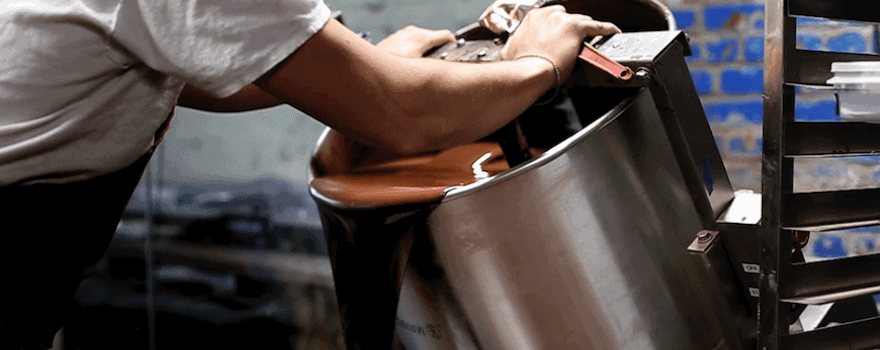
What are the benefits of raw chocolate?
From cocoa tree cultivation to the final product, raw chocolate is very different from regular chocolate. And this is evident in its nutritional qualities!
Indeed, contrary to the industrial manufacturing method (and most artisanal methods), the beans do not undergo roasting and are not heated at high temperatures (between 120 and 140°C).
This allows maximal preservation of the nutrients present in cocoa beans, such as antioxidants, minerals, and trace elements with numerous health benefits.
Natural source of minerals and trace elements
Raw chocolate is an important source of magnesium. Essential for many body functions, this mineral notably contributes to mental well-being, stress management, and mood regulation.
Thus, raw chocolate is among the best foods with antidepressant and anti-stress effects. Its beneficial effects on the nervous system have actually been demonstrated by various studies.
Raw chocolate is also rich in potassium, a mineral essential for proper muscle function, heart rate regulation, and carbohydrate metabolism.
Also read Cocoa, a remedy against arterial problems?

Finally, cocoa beans have a high content of phosphorus. A component of cells and the second most abundant mineral in the human body, it acts on the skeleton, bones, and teeth.
Phosphorus also plays a role in the production of adenosine triphosphate (ATP), our main energy source.
A superfood rich in antioxidants
Cocoa beans are naturally rich in antioxidant compounds: flavonoids, ferulic acid, picatechins, proanthocyanins… Unfortunately, when they are roasted, they lose much of these substances.
Raw cocoa, on the other hand, is not heated and therefore retains its high antioxidant content.
Along with goji berries, raw chocolate is one of the superfoods richest in antioxidants. It contains much more than cranberries, pomegranates, or blueberries.
Let’s remember that these agents effectively combat free radicals, responsible for premature aging, cell damage, and the onset of diseases.
A releaser of hormones and endorphins
By enjoying your raw chocolate, you stimulate the release of certain hormones and endorphins in your body. Indeed, raw cocoa beans naturally increase the production of serotonin or “hormone of happiness”.
This neurotransmitter promotes well-being and helps you sleep better.
At the same time, raw chocolate contains theobromine, a substance that promotes a sense of well-being, improves mood, and has an energizing effect. Finally, cocoa stimulates the release of endorphins with anxiolytic and aphrodisiac effects.

How to choose your raw chocolate?
In beans, bars, powder…
Today, raw cocoa is offered in various forms. Thus, you can find whole raw cocoa beans, raw chocolate bars, or raw cocoa powder.
Whole beans are ideal to snack on, accompanied by tea or coffee. You can also add some to your morning cereal but in moderation (no more than 8 beans per day).
Bars are the most commonly offered form of raw cocoa and the easiest to find. They are used in the same way as regular chocolate bars: as snacks, in dessert preparations…
Finally, raw cocoa powder is obtained from crushed beans and more specifically from press cakes. When cocoa paste is pressed, cocoa butter is separated from the dry matter, the cake, which is then milled into cocoa powder.
It’s an ideal form for making desserts, pastries, and homemade hot chocolate.
Quality criteria
More and more factories and chocolatiers offer raw chocolate. But, to benefit from its advantages and savor the unique flavor of raw cocoa beans, it is important to choose quality chocolate.
Prefer raw chocolate that is organically certified, made from untreated beans. This way, you’ll avoid pesticide residues and support a more environmentally friendly farming method.
If possible, choose chocolate from fair trade to support the work of small producers and ensure them a decent income.
Where to find it?
In France, raw chocolate is generally available in organic stores, specialized shops, or online.
But more and more chocolatiers are now offering a range of raw chocolate, usually in bars. Chocolate can be combined with other flavors: orange, quinoa seeds, mint, spices, coconut…
Cocoa vs raw cocoa: what are the taste differences?
Raw cocoa has a more pronounced and vegetal taste than roasted cocoa. As with coffee, know that there are many varieties of cocoa beans used for making raw chocolate.
Each of them has specific aromas that it then imparts to the final chocolate.
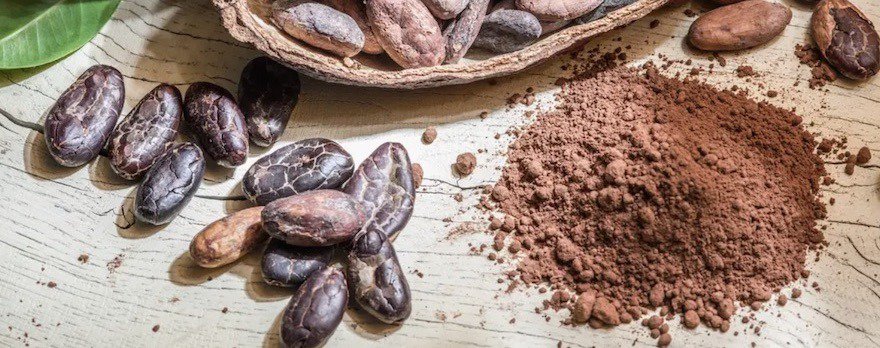
The Criollo variety beans, aromatic, fruity, and slightly bitter, are the most appreciated and sought after. Originating from Central and South America, they have a fine and subtle taste. The Criollo variety will delight all dark chocolate lovers.
We also distinguish the Forastero variety, with a much stronger and bitter taste, or the Trinitario variety, which is a cross between the two previous varieties.
Contrary to popular belief, raw chocolate is not necessarily more bitter than classic chocolate! It all depends on the chosen variety and the quality of the beans used. The geographical areas of cultivation (America, Africa, Asia…) can also impact the chocolate’s aromas.
How to cook and store raw chocolate?
Hot chocolate… with raw chocolate!
In winter, there’s nothing more comforting than a delicious hot chocolate. It’s also a great way to discover all the aromas of raw chocolate!
To make this recipe, you will need 20 cl of plant-based milk (almond or hazelnut), 20 cl of water, raw chocolate, cinnamon, and a handful of fresh dates (pitted) to replace the sugar.
You can also opt for lucuma powder as a good alternative to sugar.
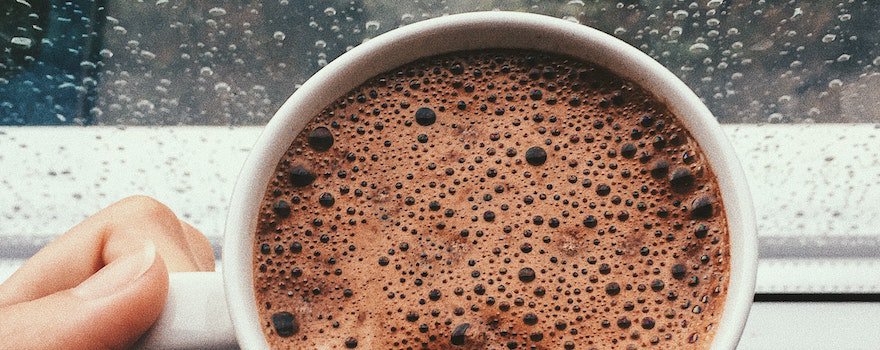
Start by blending the milk with grated raw chocolate, cinnamon, and dates. Strain and blend again if necessary.
In a saucepan, heat your water making sure not to exceed 42°C. Then pour the cocoa/cinnamon/dates mixture into your bowl along with the hot water and mix well.
Properly storing your raw chocolate
Raw chocolate should be kept in a cool, dry place away from light. Ideally, the room temperature should be between 15 and 18°C.
Except for your preparations, like spreads, avoid keeping your raw chocolate in the refrigerator as it doesn’t like the cold.


